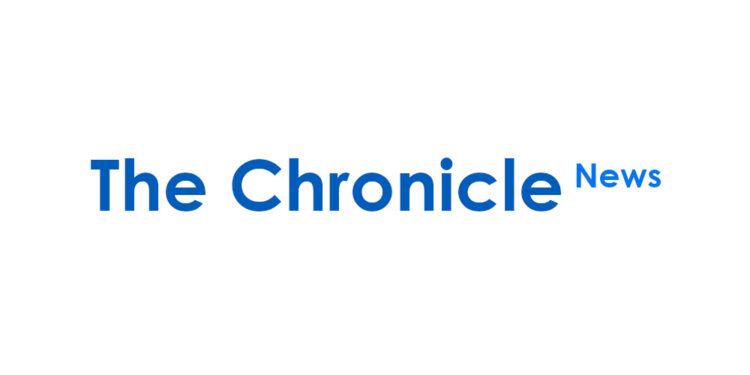Although we received some much needed rain in Southwest Oklahoma, the amounts did not have much effect on the overall lake levels.
Just take a look at the chart above to see how the various lakes in the area are faring.
And the US Drought Monitor still has most of Western Oklahoma and North Texas in the “Moderate drought” range with some areas falling into the “severe drought” category.
The only lake receiving any significant increase was Fort Cobb, which received a 2-inch rain on its watershed. Cobb is the one lake in our area that is currently above normal.
Altus-Lugert is still the worst lake in this area, with a level nearly 20 feet below normal level and a total capacity of only 29%. With that and the fish kills of the last couple of years, Lugert is really suffering the effects of a prolonged drought.
The Oklahoma mesonet has a mid-range projection for below average temperatures and above average precipitation for the next couple of weeks, so keep your fingers crossed.
The National Weather Service and NOAA are predicting chance for current El Nino conditions to strengthen in the Pacific Ocean this Summer into Fall. If that happens then the chances for a wetter weather change would increase for Oklahoma, a condition that we all would appreciate.
Summer Sun can end the fun
Summer is here! And with it come some dangers that can make your summertime fun much less enjoyable. Sunburn is one of those dangers.
To many people, the summer season means time off from school, carefully planned family vacations and sampling the fruits of the great outdoors.
On the down side, summer also brings sunburns. It’s a season when outdoor participants need to take extra precautions to protect themselves from the perils of too much sun.
Several studies over the years have indicated a higher incidence of skin cancer fatalities for those who spend large amounts of time outdoors. The best way to cut the number of skin cancer cases is to follow advice from the American Cancer Society (ACS)– avoid the sun between the hours of 10 a.m. and 3 p.m.
But sometimes avoiding contact is not possible, so if you cannot avoid exposure, then there are some ways to prevent skin damage
Summer sunburns and overexposure to UVA and UVB rays from the sun, even without visible burning, are summer-time hazards that can have long-lasting effects. Frequent and prolonged sun exposure over many years is the primary cause of skin cancer. The ACS says those at risk are people with fair complexions, redheads, blondes and people with blue or grey eyes.
Non-melanoma skin cancers are the most common type diagnosed in the U.S. In 2011, more than 1 million cases will be diagnosed, and 1,000 people will die from this form of cancer, according to the National Cancer Institute.
The stats are grimmer for melanomas – an estimated 62,000 people will be diagnosed with this form annually. More than half of them will die from the disease, although not all in the first year after diagnosis.
Convincing people to take steps to reduce their risk of skin cancer by wearing sunscreen, wide-brimmed hats and long-sleeved shirts on a regular basis during the dog days of summer remains a challenge. Fortunately, extensive research has resulted in vastly improved products compared to the thick, gloppy versions of yesteryear.
If you’re not yet a regular sunscreen user, these innovations may help convince you to jump on the bandwagon. “Shows where it goes” formulations make it easy to see where you have and have not applied sunscreen.
Clear, non-greasy, oil-free, fast-drying and quick-spray are among the newest offerings on the shelf. Although initially developed with athletes in mind, sport, sweat-proof and water-proof formulas cut down on moisture running into anyone’s eyes.
Finally, you need not dread smelling like a coconut. Most popular sunscreen products are available in unscented versions.
Just remember, although sunscreen products have vastly improved, the old rule of thumb about sun protection factor (SPF) still applies – the higher the number, the greater the protection. Even if your summer activity is conducted in what you might believe to be a protected shade, it never hurts to take extra precautions against the danger of the summer sun.
If all of that chemical prevention is not your style, then here are some other more natural means of prevention. I’m no vegetarian, or whole foods nut, but there are some good scientific studies that support resistance of sun exposure problems.
· Lycopene — That famous carotenoid found in tomatoes, has been shown in a recent in studies to protect humans against sun damage. Healthy women, aged 21-47, who ate 55 g of tomato paste containing 16 mg of lycopene every day for 12 weeks experienced significant protection against acute – and potentially long term – sun damage. Remember that cooked tomatoes, and tomato products like paste and sauce, offer far more bioavailable lycopene than raw tomatoes. If you’re counting, 55 grams of tomato paste is a hair over 3 tablespoons.
· Astaxanthin — A super-antioxidant found in algae, the organisms that eat it, and the organisms that eat those organisms (like salmon, shrimp, and pink flamingo – the pink/red color gives it away). It has been getting some attention as an “internal sunscreen.” Does it stack up? Well, there’s a study on isolated human skin cells, in which astaxanthin definitely protects against UVA damage. And here’s another study on isolated skin cells showing its protective effects. But those are limited. Does the effect persist in real life settings? It’s too early to say, but the results look promising.
· Vitamin D — A common theory is that supplementing vitamin D increases sun tolerance and protection against sun damage, and a recent study seems to confirm this. Various forms of the vitamin D prohormone offered various protections against UV damage in a mouse model: reduced sunburn, lowered incidence of tumor development. Huh, imagine that! Getting sun gives you vitamin D, which in turn protects you from too much sun. It’s funny how these things work out.
· Vitamin E — A powerful antioxidant that reduces and absorbs harmful UV rays from penetrating skin found in nuts, seeds, oats and other whole grain foods.
· Vitamin C- Prevents against premature skin aging and cancer through its antioxidant activity. Found in strawberries, kiwi, citrus fruits and peppers.
· Omega-3s — A recent study out of Australia found that adults with the highest serum concentrations of DHA and EPA had the least “cutaneous p53 expression.” What’s the significance of cutaneous p53 expression? When your skin is in danger of damage from the sun, p53 expression is unregulated to protect it, and high p53 immunoreactivity can lead to melanoma. The fact that high DHA/EPA meant low p53 immunoreactivity suggests that the omega-3s were protecting the skin.
· Saturated Fat – A rodent study in which mice were given a saturated fat-enriched diet showed a greater ability for mice with higher saturated fat diets to fend off melanomas. This goes against some of the diet theories out there. So, if you’re going be out in the sun, better eat your butter, palm oil, and coconut oil.
· Tea — Tea, especially green tea, offers a complex arsenal of antioxidant compounds. How it works and what’s doing it isn’t fully understood, but it’s generally accepted that drinking green tea is a smart move and a mainstay of many healthy traditional cultures. Unsurprisingly, there’s also evidence that dietary green tea, specifically its polyphenols, inhibit the development of skin tumors by controlling inflammation and preventing DNA damage. Topical green tea extracts applied directly to the skin also offer photoprotection.
· Proanthocyanidins — Proanthocyanidins, which can be found in wine and grape seeds, berries like blueberries and chokeberries, nuts like hazelnuts and pistachios, and certain niche grains like sorghum and barley, have been efficacious in preventing UV damage in rodents. Whether it works for humans remains to be seen, but drinking wine and eating berries sound like fine ideas regardless of their photoprotective efficacy. Actually, a recent study found that people who supplemented with grape seed extract (high in anthocyanidins) had a significantly lower risk of skin cancer. It sounds promising.
· Omega-3 Fatty Acids- Reduce inflammation and protect skin from sunburns and melanoma. Found in wild salmon, herring, mackerel, algae/seaweed, green leafy vegetables, flax, hemp and chia seeds.
Want to reach a local audience and grow your business?
Our website is the perfect platform to connect with engaged readers in your local area.
Whether you're looking for banner ads, sponsored content, or custom promotions, we can tailor a package to meet your needs.
Contact us today to learn more about advertising opportunities!
CONTACT US NOW






